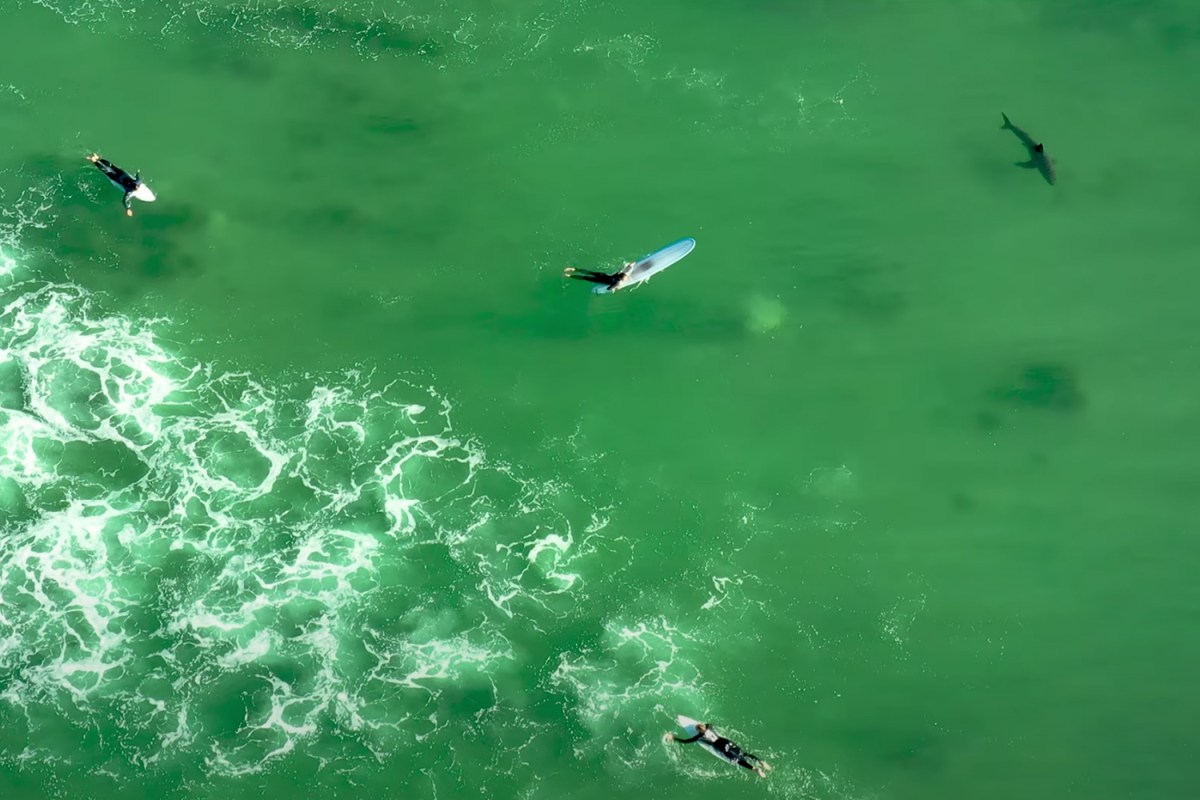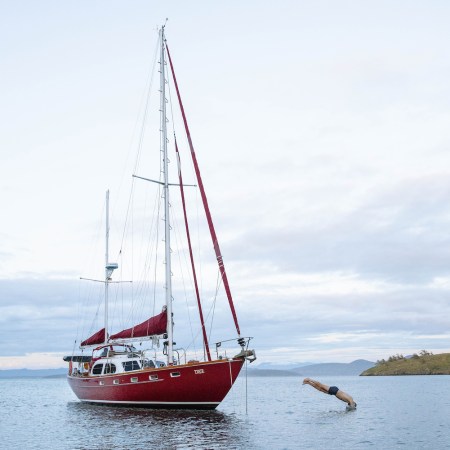It was once a commonly held belief that to observe a great white shark near the shores of Southern California — or any shore, anywhere for that matter — was a rare and potentially deadly occurrence. Now, thanks to drones, we know that is not actually true.
According to a new report by the LA Times, great white sharks are far more abundant in the shallows than once thought — and much, much closer, too. Carlos Gauna is a SoCal-based photographer and FAA-certified drone pilot, whose work centers around — or rather above — the ocean. It has led to an intimate understanding of how great whites are able to peacefully coexist alongside humans and most likely always have, unbeknownst to us.
In one of the most recent uploads to Gauna’s YouTube channel, he is able to spot a great white within just two minutes of launching his drone. Later, he watches as three young sharks meander along in extremely close proximity to several surfers. At one point, around the 3:28 mark, one surfer even appears to make contact with one of the sharks, though both parties remain visibly unfazed.
Gauna’s drone work lends itself nicely to a secondary longstanding theory, which is that great white shark attacks are far rarer than most of us probably believe, which has led to decades of unjustified demonization. According to Gauna himself, most shark attacks can be chalked up to “misunderstandings” and poor visibility — a nonissue in the shallows of SoCal that surfers frequent. We know this now because we can see it in ways that weren’t previously possible.
“Drones have become such a valuable tool for us scientists now,” Christopher Lowe, professor of marine biology and director of the Shark Lab at Cal State Long Beach, told the LA Times’ Joe Mozingo. “It gives us that bird’s-eye view that we didn’t have before.”
Lowe’s lab is currently utilizing drones of its own, according to Mozingo, to determine which “water users” are most likely to have an encounter with a great white, though he echoes Gauna’s belief that the sharks, frankly, just don’t care.
“The surfers can’t see them, the swimmers can’t see them. But we can now see them from the air. And in those cases the sharks just don’t seem to change their path,” he said. “Sometimes they’ll swim right under a surfer, but they don’t circle back. They just keep going.”
Thanks for reading InsideHook. Sign up for our daily newsletter and be in the know.



















